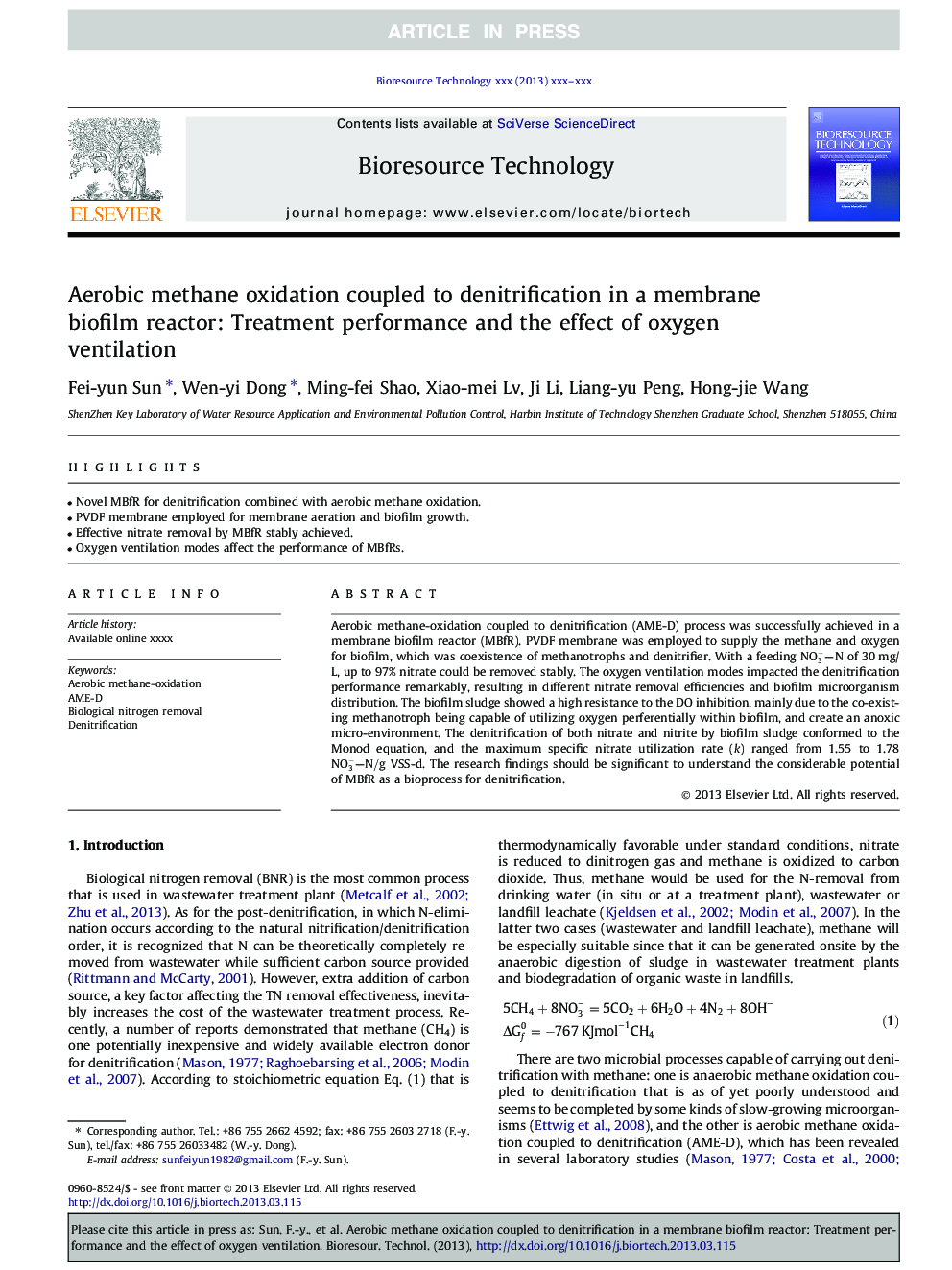| Article ID | Journal | Published Year | Pages | File Type |
|---|---|---|---|---|
| 681018 | Bioresource Technology | 2013 | 8 Pages |
Abstract
Aerobic methane-oxidation coupled to denitrification (AME-D) process was successfully achieved in a membrane biofilm reactor (MBfR). PVDF membrane was employed to supply the methane and oxygen for biofilm, which was coexistence of methanotrophs and denitrifier. With a feeding NO3--N of 30Â mg/L, up to 97% nitrate could be removed stably. The oxygen ventilation modes impacted the denitrification performance remarkably, resulting in different nitrate removal efficiencies and biofilm microorganism distribution. The biofilm sludge showed a high resistance to the DO inhibition, mainly due to the co-existing methanotroph being capable of utilizing oxygen perferentially within biofilm, and create an anoxic micro-environment. The denitrification of both nitrate and nitrite by biofilm sludge conformed to the Monod equation, and the maximum specific nitrate utilization rate (k) ranged from 1.55 to 1.78 NO3--N/g VSS-d. The research findings should be significant to understand the considerable potential of MBfR as a bioprocess for denitrification.
Related Topics
Physical Sciences and Engineering
Chemical Engineering
Process Chemistry and Technology
Authors
Fei-yun Sun, Wen-yi Dong, Ming-fei Shao, Xiao-mei Lv, Ji Li, Liang-yu Peng, Hong-jie Wang,
